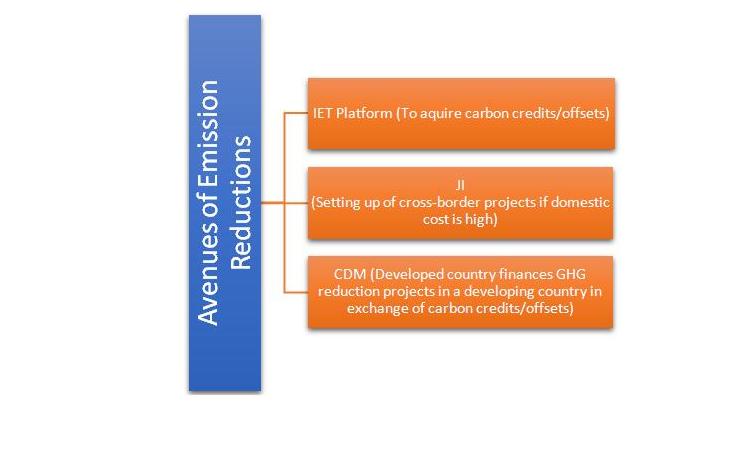The International treaty of United Nations Framework Convention on Climate Change (UNFCCC) was amended in 1997 by the Kyoto Protocol. The objective of the protocol was the “stabilisation” of greenhouse gas (GHG) concentrations (caused by emissions/usage of oil, gas, coal and nuclear material) in the atmosphere by setting a 5-year cap on emissions. However, here, a legally strong and binding agreement was replaced by one that was watered down by having selectively enforceable provisos with no real adjudication or penalty on defaulting nations. It should be duly noted that in spite of being world’s largest emitters, the U.S.A was not a party to the Kyoto Protocol and the Democratic Republic of China has no obligations to abide by it.
The Carbon Credit was an instrument created under this protocol that could be transferred (after meeting certain criteria) for consideration from a lesser polluting industrial unit/ nation to another which had exceeded/ was going to exceed its emission limit via the International Emission Trading (IET) platform set up under this agreement. Yes, it also has a very complex pricing mechanism which is conveniently decided by the central government of that nation after factoring in various domestic and international elements. The intention behind creating this instrument was to transfer the limit of emissions from a party that has excess to another which is going to breach theirs if they don’t raise their ceiling. It was to be treated as an offset to avoid penalties under the UNFCCC.
Seems like a noble concept on paper to offer leeway to unintentional breaches of emission limits caused due to force majeure. However, the idea of creating a market for buying and selling of limits has actually capitalised the instrument and defeated its raison d’être.
Let us take an illustration: If Russia decides to reactivate a nuclear plant that would lead them to breach their emission limit, they could simply acquire a carbon offset from a lesser polluting nation like Canada or South Africa and essentially acquire a license to pollute. The same can be explained with an industrial unit in the U.K nearing its limit that could purchase an extension from a lesser polluting unit in Indonesia. In no way restitution of environmental damage is being done, it’s just a financial transaction. A license to pollute. This lands up being contrary to the Polluter Pays Principle (Established by M.C Mehta’s legal crusades) wherein the polluter not only pays penalties to the government and damages to the people affected but also proportionate restitution of the environment lost.
This explains why the Indian government since 2012 has stopped allocating fresh credits and are now considering a tax of 10% on income from transfers of old credits.
Another avenue with no impact is the Joint Implementation (JI) program wherein a country sets up projects for reducing GHG emissions in another country if the cost of project domestically is unreasonably high. However, let us take another example to how the JI program is self-defeating:
Let’s assume that the Indian government sanctions cutting down of all mangroves and relaxes emission law leading to a rise in GHGs. They set up large scale wind and solar farms in Sri Lanka due to economies of scale. This is still not improving environmental conditions in India. The JI project has no impact on the country which is setting it up. The purpose of this avenue is defeated as a polluting nation is furnishing projects in another nation just because of fiscal logic and not self-imposed environment consciousness. Net emissions in the country being polluted remains the same.
The only saving grace in the protocol is the Clean Development Mechanism (CDM) wherein one nation builds GHG reducing projects in another nation in exchange for their carbon credits which seems like a fair trade.

If you’ve read this far, you must be wondering of possible solutions to these issues. Here are some suggested provisos:
- Mandatory global emissions caps set out at a 5-year stretch with an annual review by UNFCCC if emissions of assesse exceed 22.5% of assigned limit.
- Mandatory and exhaustive penalties for exceeding limits or violation of established framework.
- Embargo on issuing new credits to top 5 defaulters until they present an action plan to a committee to be constituted for this purpose.
- Dissolving the JI program.
- Mandatory for signatories to change domestic environment policy to encompass the objectives of the protocol and assist to achieve targets.
Regards,
The CSR Journal Team
Subscribe


